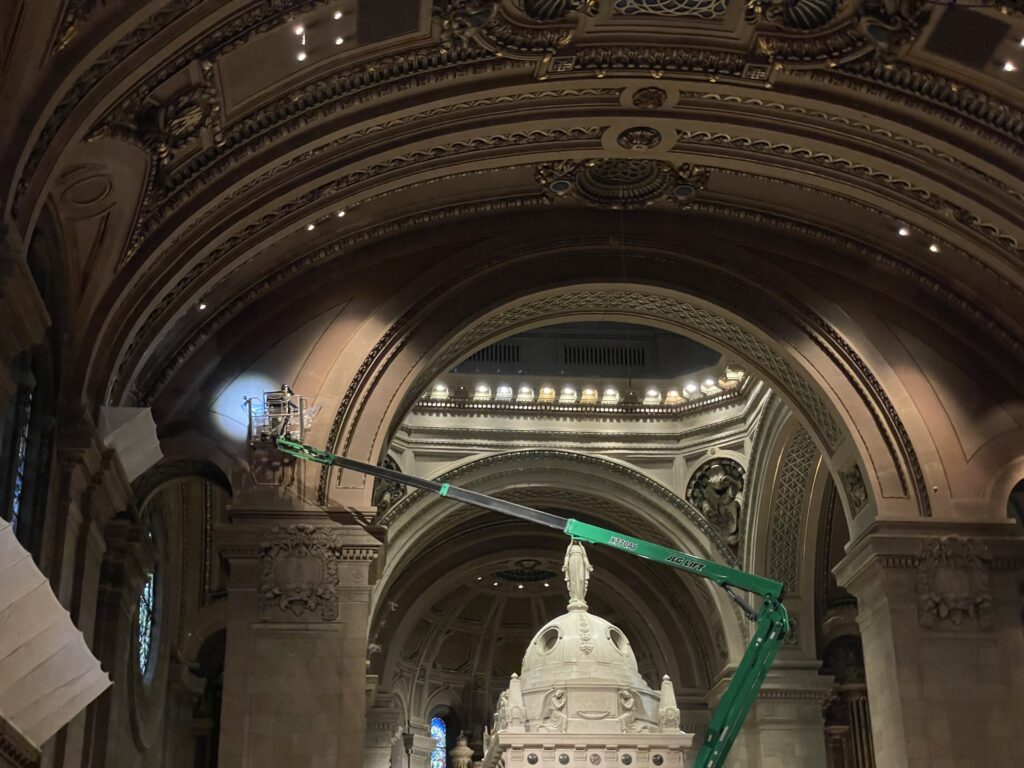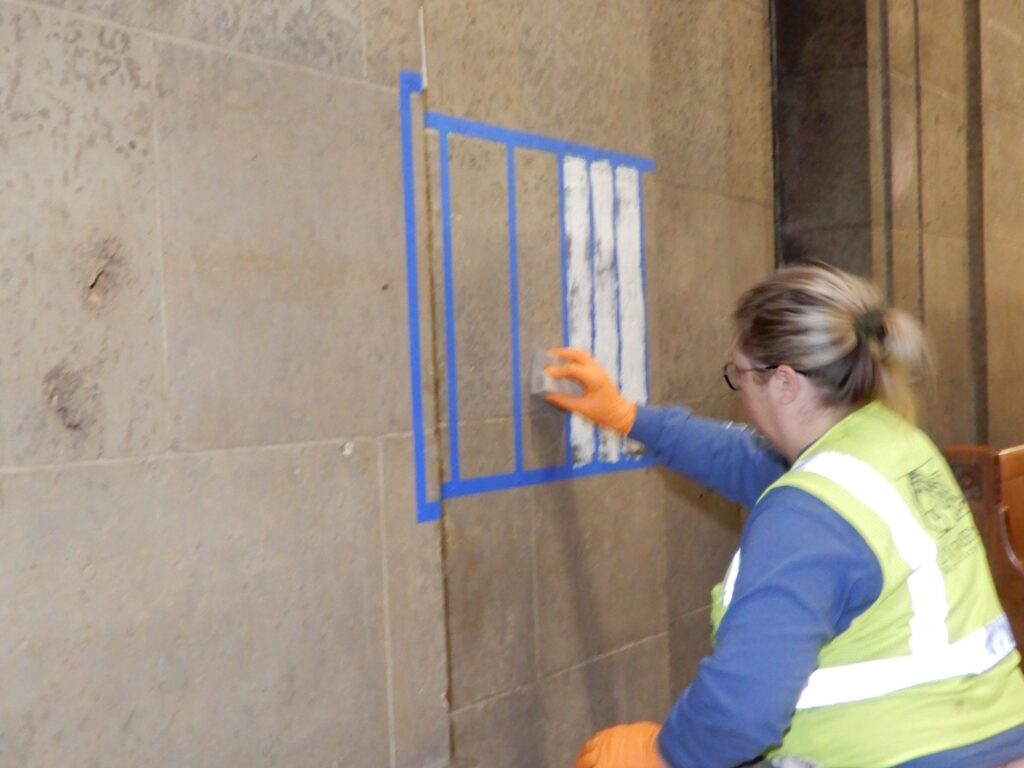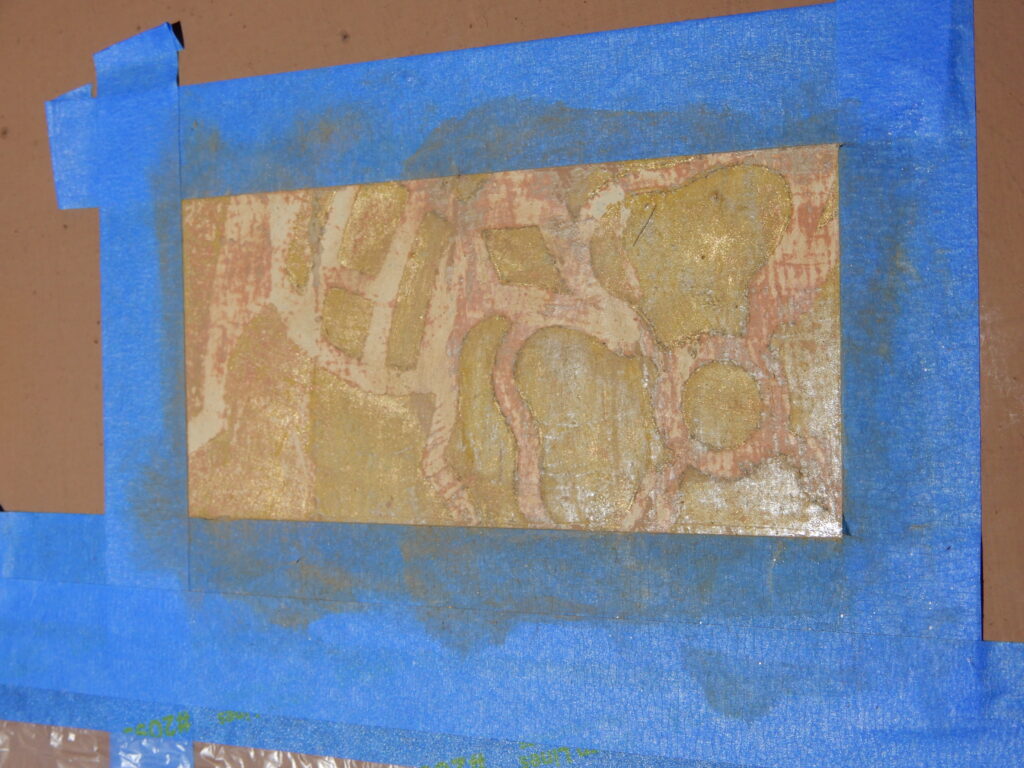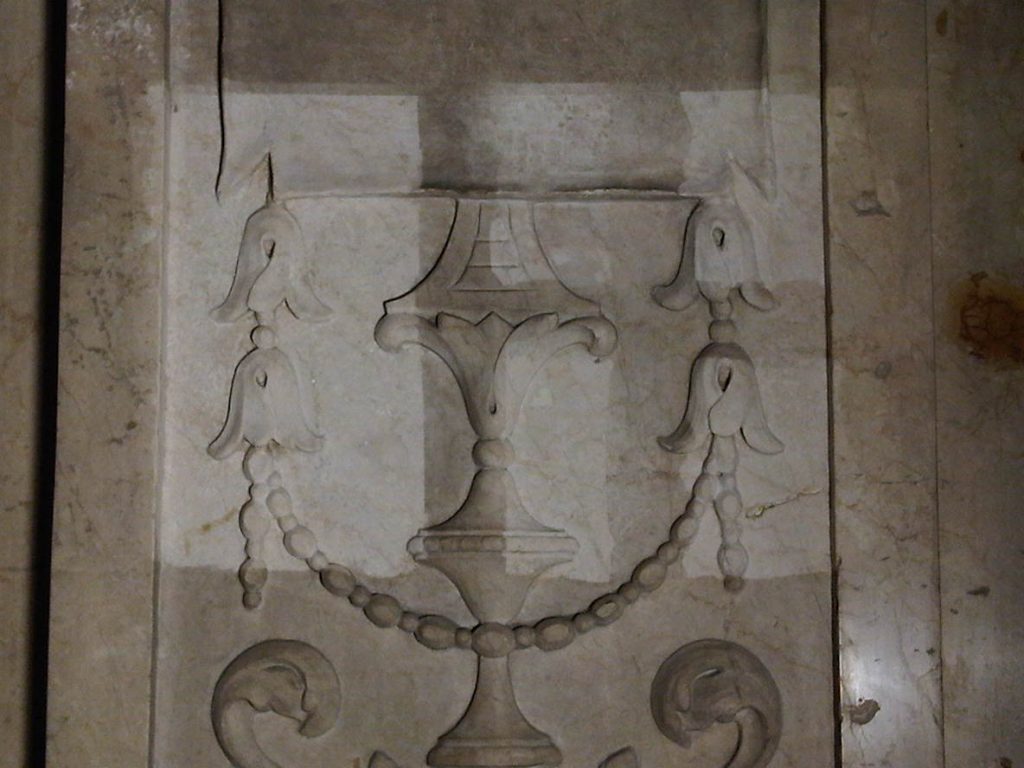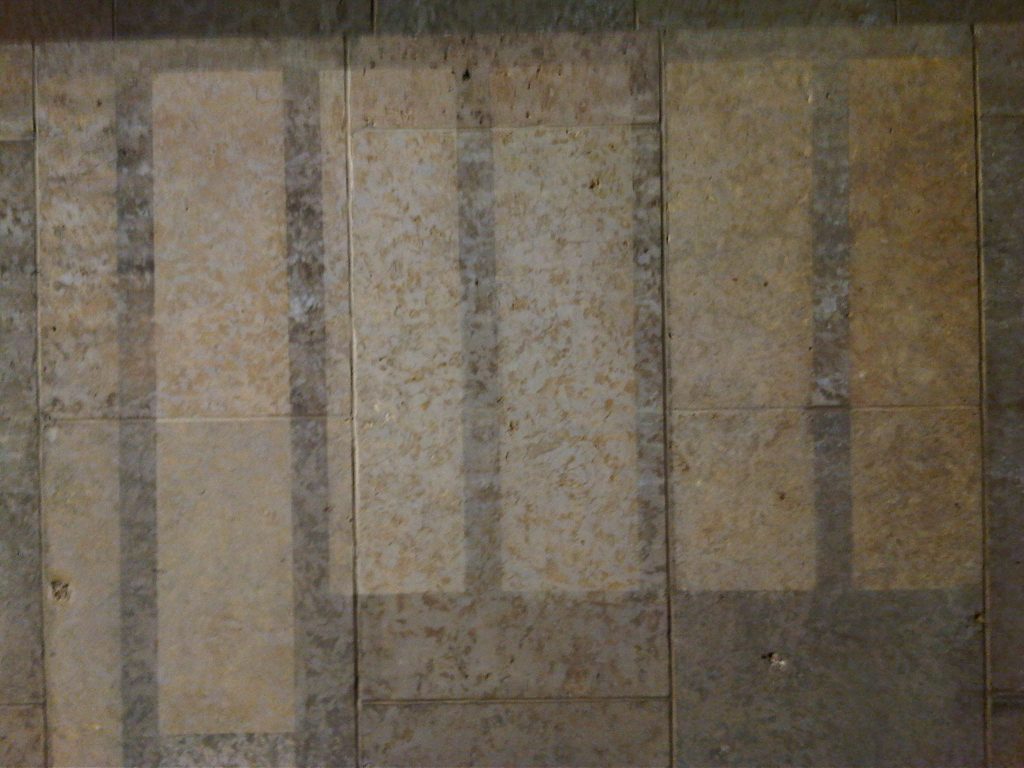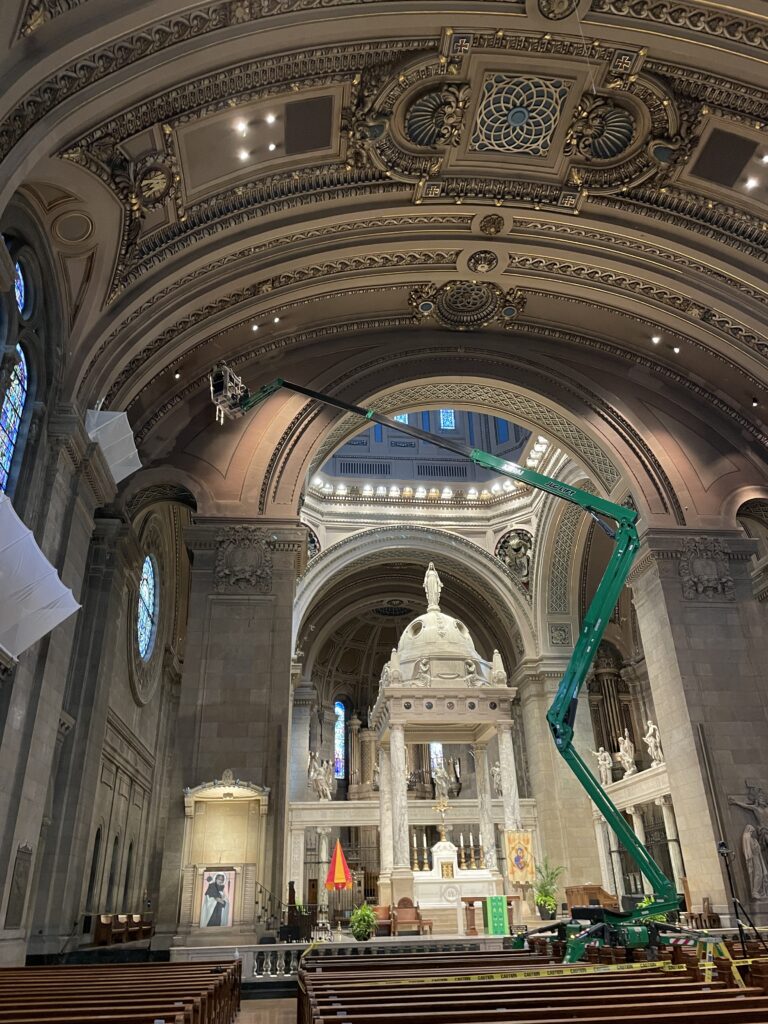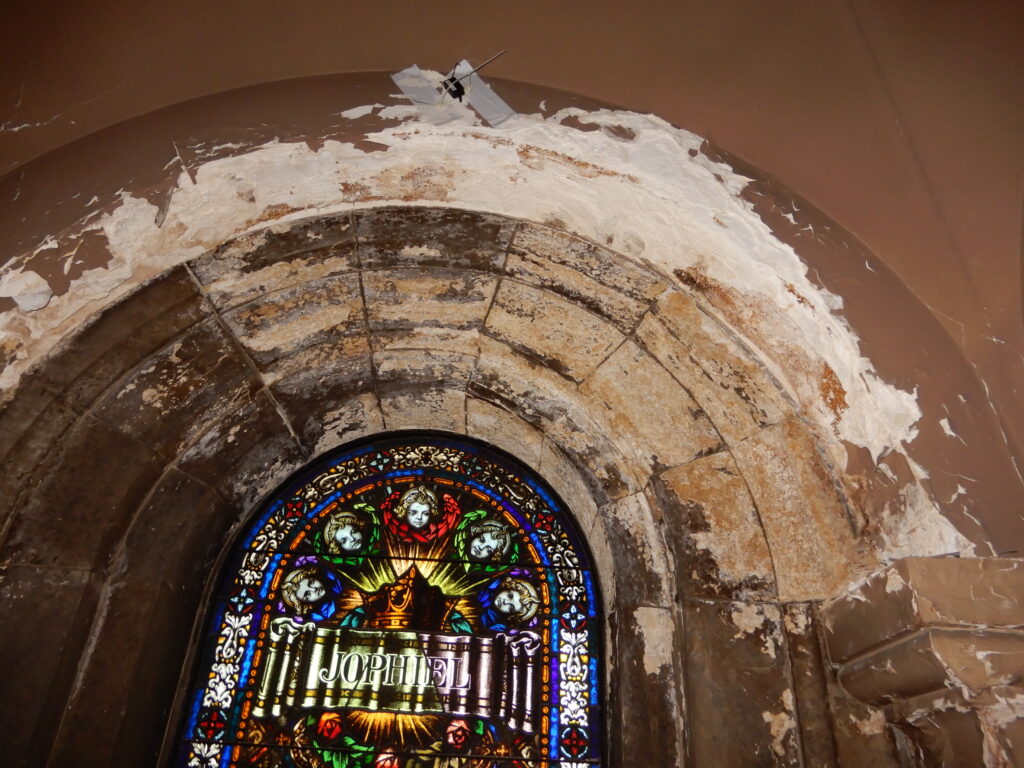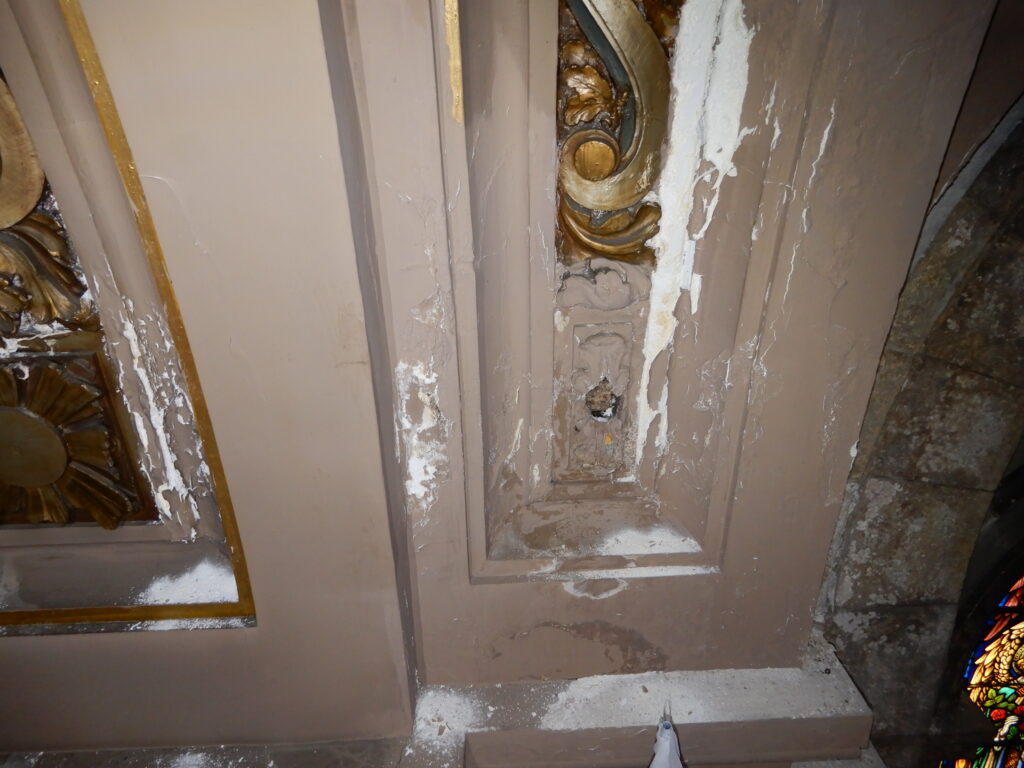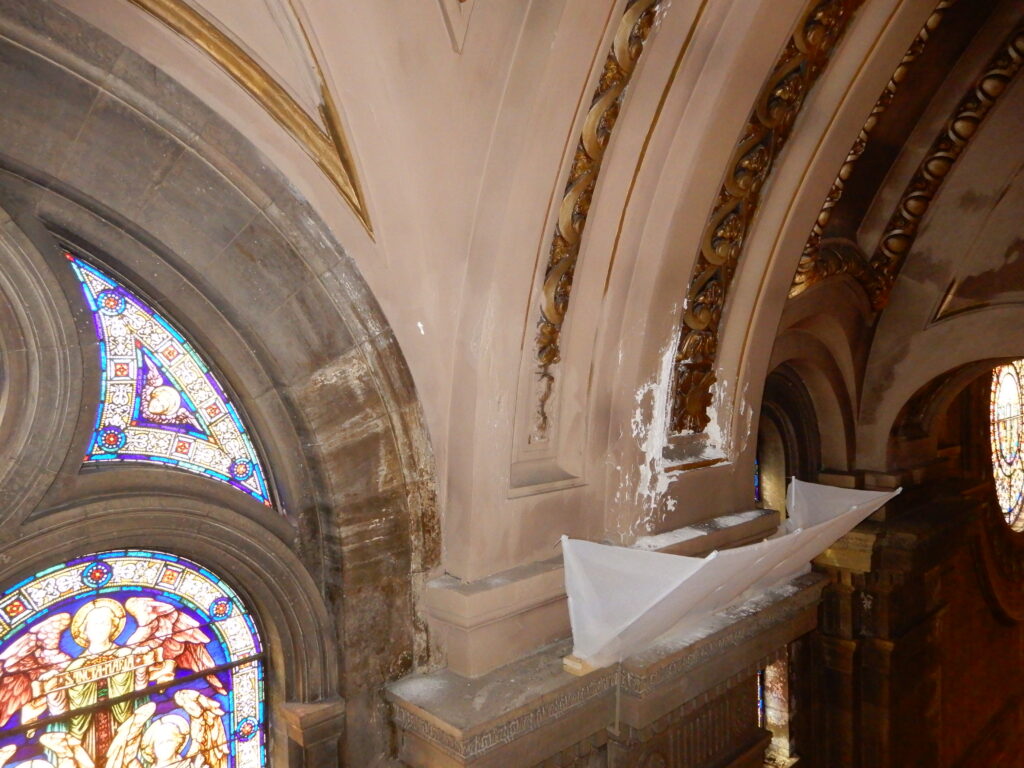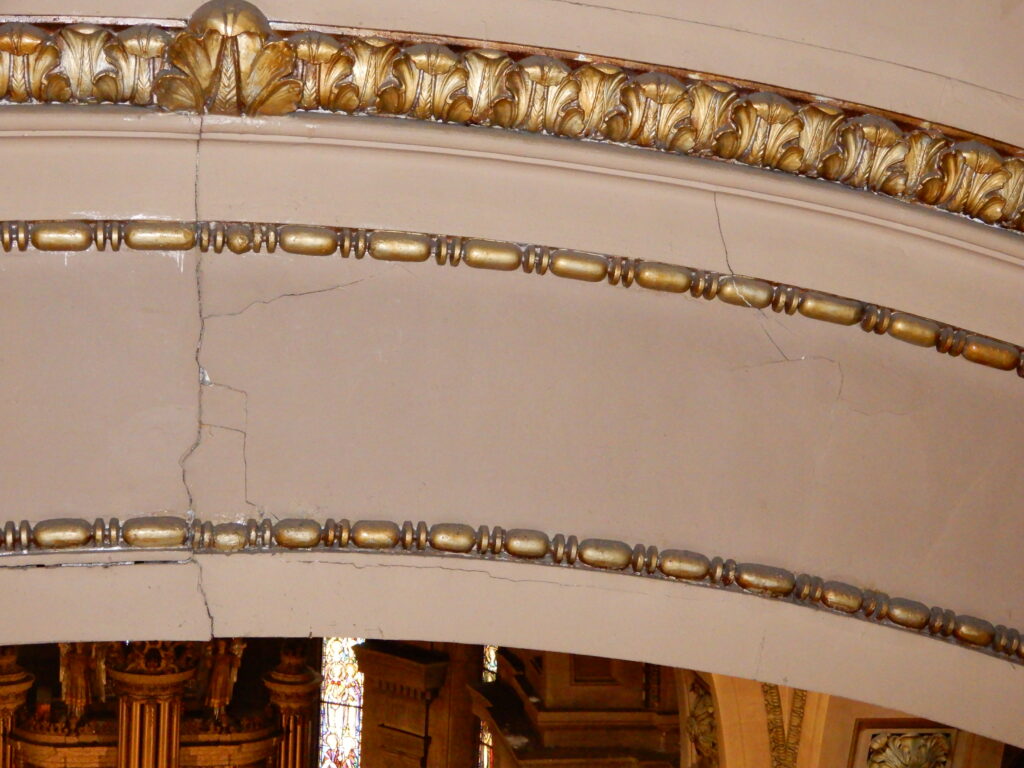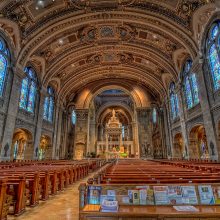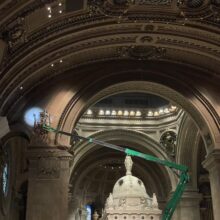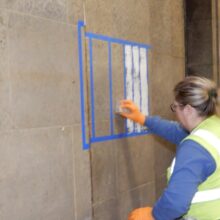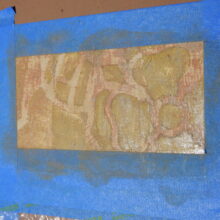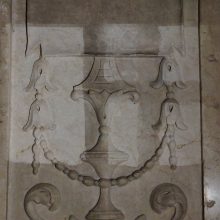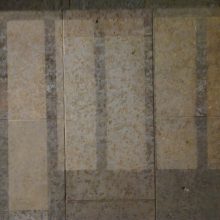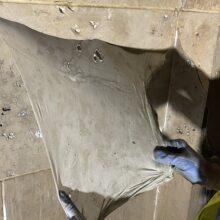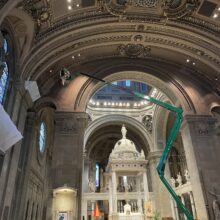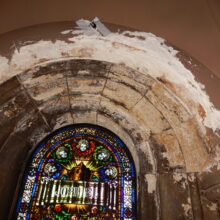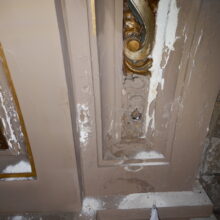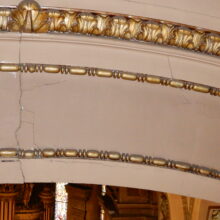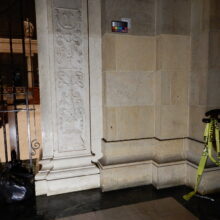Basilica of St. Mary—Private
The historic Basilica of St. Mary in Minneapolis holds the distinguished title of being the first Basilica in the United States. Constructed between 1907 and 1915, this architectural marvel was born from the vision of Archbishop John Ireland and bears the mark of French architect Emmanuel Masqueray, a master of the Beaux-Arts style. EverGreene Architectural Arts’ conservation team was invited to complete a comprehensive conditions assessment at St. Mary’s Basilica. The purpose of the survey was to support future renovation efforts by documenting current conditions of the historic paint and plaster work. Stone cleaning tests were also performed to determine methods for revitalizing its appearance.
The Basilica is largely made up of limestone and marble, with plaster and paint used for the ceiling features. EverGreene conservators performed a conditions survey of the ceiling to determine the extent of previous water damage. The plaster features were visually analyzed and sounded at close range where accessible to detect both surface and sub-surface deterioration. Years of roof leaks and other areas of water infiltration resulted in damage to the plaster causing efflorescence (salts), along with some cracking. Findings were meticulously documented photographically and on reflected ceiling plans.
Our conservators were also tasked with removing overpaint in select areas to identify historic colors and decorative schemes. In collaboration with our artists in our design studio, the historic stencils and color palettes were able to be recreated in preparation for future restoration efforts.
Select areas of the Basilica’s walls underwent cleaning tests to determine the best approach for restoration. The stone was treated with a poultice, which is used to remove soiling from the surface, as well as superficial soiling from inside the stone. The results allow for years of grime to be removed, showing the natural variation of the Mankato limestone and decoration on the marbles.
All work was performed in support of the next stage of the project: restoration. Careful consideration is being made to materials, treatments, matching to historic colors, mock-ups, and ethical conservation practices.

